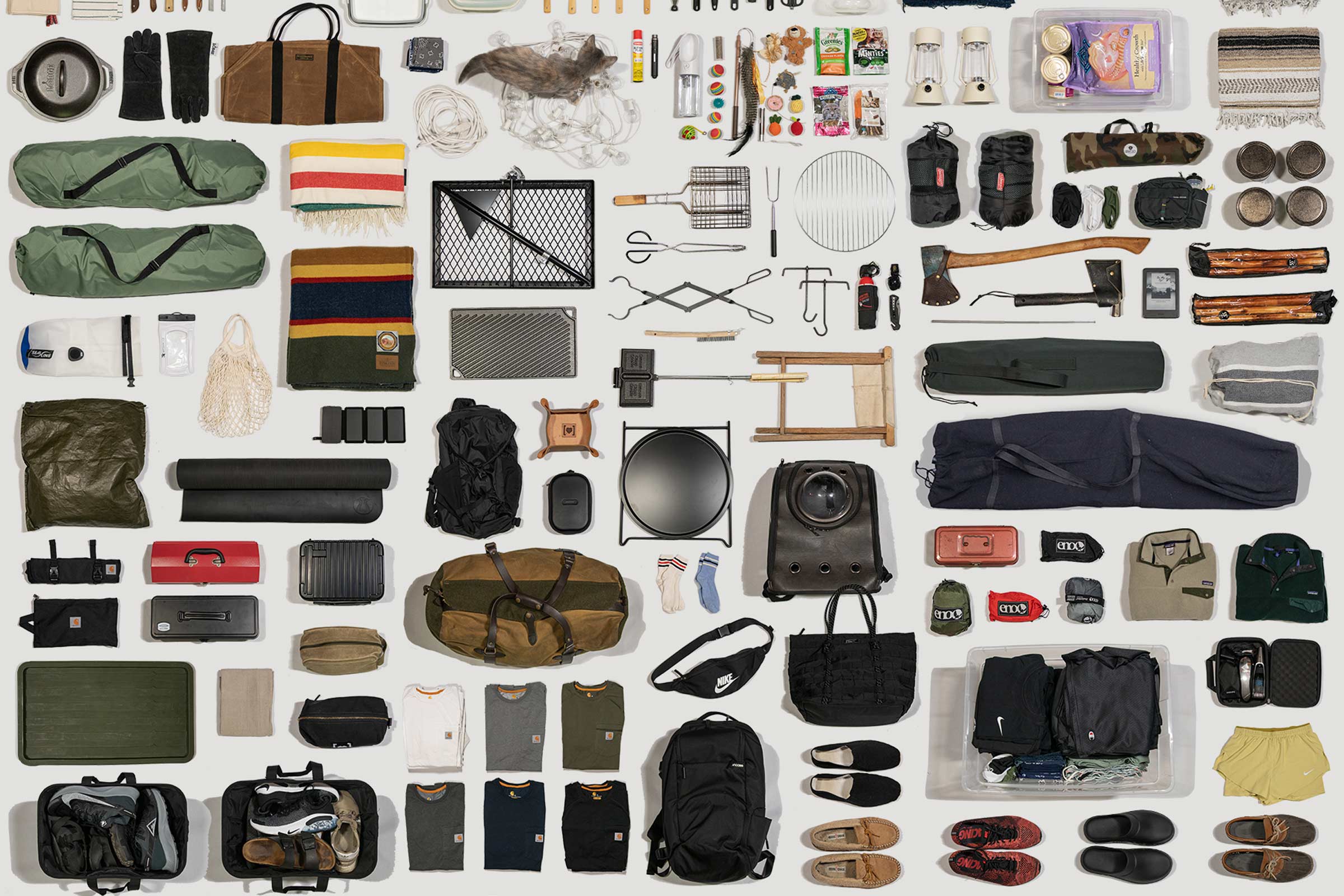What camping supplies are absolutely essential? The most important camping necessities include a tent for shelter, a sleeping bag and pad for warmth and comfort, cooking equipment for preparing meals, and appropriate clothing for the weather. This camping gear guide goes far beyond the basics to help you create the perfect camping packing list for a safe and enjoyable outdoor recreation experience. We’ll cover everything from your wilderness survival kit to the best camping supplies to ensure you have all the essential camping gear you need.

Image Source: campspot.blog
The Cornerstone: Shelter and Sleep
A good night’s sleep is crucial for enjoying your camping trip. Your tent and sleeping setup form the core of your comfort and protection.
Tents: Your Home Away From Home
Choosing the right tent is paramount. Consider these factors:
- Size: How many people will be sleeping in the tent? Add one person to the listed capacity for extra room.
- Seasonality: 3-season tents are best for spring, summer, and fall. 4-season tents are designed for winter camping and harsher conditions.
- Weather Resistance: Look for a tent with a high waterproof rating (at least 1500mm) and taped seams.
- Ease of Setup: Practice setting up your tent at home before your trip.
- Weight: If you’re backpacking, weight is a major consideration.
Sleeping Bags: Staying Warm and Cozy
Your sleeping bag’s temperature rating determines how warm you’ll be.
- Temperature Rating: Choose a bag rated for temperatures lower than you expect to encounter.
- Fill Type: Down is lighter and more compressible than synthetic, but synthetic performs better when wet.
- Shape: Mummy bags are more thermally efficient, while rectangular bags offer more room to move.
- Sleeping Bag Liners: These add warmth and keep your sleeping bag clean.
Sleeping Pads: Comfort and Insulation
A sleeping pad provides crucial insulation from the cold ground and adds comfort.
- Type: Foam pads are inexpensive and durable. Air pads are lighter and more compact. Self-inflating pads offer a good balance.
- R-Value: This measures insulation. Higher R-values are better for cold weather.
- Thickness: Thicker pads generally offer more comfort.
Kitchen Essentials: Fueling Your Adventures
Enjoying delicious meals in the great outdoors is a highlight of camping. Having the right camping equipment makes cooking easier and more enjoyable.
Camp Stoves: Cooking with Convenience
- Fuel Type: Propane stoves are common and easy to use. Liquid fuel stoves are more versatile and perform better in cold weather.
- Number of Burners: Consider how many dishes you’ll be cooking at once.
- Size and Weight: Backpacking stoves are smaller and lighter.
- Wind Resistance: Look for stoves with built-in wind protection.
Cookware: From Pots to Pans
- Material: Aluminum is lightweight and conducts heat well. Stainless steel is durable and easy to clean. Cast iron is great for campfire cooking.
- Nesting Sets: These save space.
- Utensils: Pack durable and lightweight utensils.
- Plates and Bowls: Choose lightweight and reusable options.
Water Filtration and Storage: Staying Hydrated
Access to clean water is essential.
- Water Filters/Purifiers: Pumps, gravity filters, and purification tablets are all options.
- Water Bottles/Reservoirs: Bring enough capacity for your needs.
- Collapsible Water Containers: These are useful for carrying water back to camp.
Food Storage: Protecting Your Provisions
- Bear-Resistant Canisters: Required in many areas to protect food from bears.
- Dry Bags: Keep food dry and protected from the elements.
- Cooler: For perishable items.
- Food Containers: For organizing and storing food.
Camp Kitchen Checklist
| Item | Description |
|---|---|
| Camp Stove | For cooking meals |
| Fuel | For the camp stove |
| Cookware | Pots, pans, and utensils |
| Plates & Bowls | Lightweight and reusable |
| Water Filter/Purifier | To ensure clean drinking water |
| Water Bottles | For carrying water |
| Food Storage | Bear canister, dry bags, cooler |
| Biodegradable Soap | For cleaning dishes |
| Trash Bags | To pack out all trash |
Clothing: Dressing for Success
Layering is key to staying comfortable in varying weather conditions.
Base Layers: Moisture Management
- Material: Merino wool or synthetic fabrics wick away moisture.
- Fit: Snug-fitting for optimal performance.
Insulating Layers: Staying Warm
- Fleece or Down Jacket: Provides warmth in cold conditions.
Outer Layers: Protection from the Elements
- Waterproof and Windproof Jacket and Pants: Essential for rain and wind.
Footwear: Supporting Your Feet
- Hiking Boots: Provide support and traction on uneven terrain.
- Socks: Moisture-wicking socks prevent blisters.
Headwear: Protection from Sun and Cold
- Hat: Protects from sun or cold.
- Sunglasses: Protects your eyes from the sun.
Camping Clothing Checklist
| Item | Description |
|---|---|
| Base Layers | Moisture-wicking shirt and pants |
| Insulating Layer | Fleece or down jacket |
| Outer Layer | Waterproof and windproof jacket and pants |
| Hiking Boots | Sturdy footwear for hiking |
| Socks | Moisture-wicking socks to prevent blisters |
| Hat | To protect from sun or cold |
| Sunglasses | To protect eyes from sun |
| Gloves | For warmth in cold weather |
Safety and First Aid: Being Prepared
A well-stocked first-aid kit and knowledge of basic first aid are essential for dealing with minor injuries and illnesses. Your wilderness survival kit should include:
First-Aid Kit Essentials
- Bandages: Various sizes for cuts and scrapes.
- Antiseptic Wipes: To clean wounds.
- Pain Relievers: Ibuprofen or acetaminophen.
- Antihistamine: For allergic reactions.
- Tweezers: For removing splinters or ticks.
- Emergency Blanket: For warmth in case of hypothermia.
- CPR Mask: For performing CPR safely.
Navigation: Knowing Where You Are
- Map and Compass: Essential for navigating in the wilderness.
- GPS Device: Provides accurate location information.
Lighting: Illuminating the Night
- Headlamp or Flashlight: For navigating in the dark.
- Lantern: For lighting up the campsite.
Fire Starting: Building a Campfire
- Lighter or Matches: Waterproof matches are ideal.
- Fire Starter: Makes starting a fire easier.
Repair Kit: Fixing Gear on the Go
- Duct Tape: For repairing tears in tents or other gear.
- Knife or Multi-Tool: For various tasks.
Safety Checklist
| Item | Description |
|---|---|
| First-Aid Kit | Bandages, antiseptic wipes, pain relievers, etc. |
| Map and Compass | For navigation |
| Headlamp/Flashlight | For seeing in the dark |
| Fire Starter | To easily start a fire |
| Knife/Multi-Tool | For various tasks |
| Sunscreen | To protect from the sun |
| Insect Repellent | To ward off insects |
Camp Comforts: Enhancing Your Experience
These items aren’t strictly necessary, but they can make your camping trip more enjoyable.
Camp Chairs: Relaxing Around the Campfire
- Folding Chairs: Lightweight and easy to carry.
Camp Table: Preparing Meals and Playing Games
- Folding Table: Provides a stable surface for cooking and other activities.
Entertainment: Staying Occupied
- Books, Games, or Music: For relaxing and enjoying downtime.
Camp Sanitation: Maintaining Hygiene
- Toilet Paper: Pack it out!
- Hand Sanitizer: For cleaning hands.
- Trowel: For burying human waste.
Backpacking vs. Car Camping: Adjusting Your Gear
The type of camping you plan to do will influence your gear choices.
- Backpacking: Requires lightweight and compact gear. Every ounce counts.
- Car Camping: Allows for heavier and bulkier items. Comfort is prioritized.
A Comprehensive Camping Essentials List
This camping essentials list summarizes everything discussed in this guide:
- Shelter: Tent, footprint, stakes.
- Sleep System: Sleeping bag, sleeping pad, pillow.
- Cooking: Stove, fuel, cookware, utensils, plates, bowls.
- Water: Filter/purifier, water bottles/reservoir.
- Food: Non-perishable food, snacks.
- Clothing: Base layers, insulating layers, outer layers, footwear.
- Safety: First-aid kit, map, compass, headlamp/flashlight, fire starter.
- Comfort: Camp chair, camp table, entertainment, sanitation items.
Tips for Packing Your Camping Gear
- Make a List: Use this guide as a starting point and customize it to your specific needs.
- Check the Weather: Pack appropriate clothing and gear for the expected conditions.
- Pack Light: Avoid bringing unnecessary items.
- Organize Your Gear: Use packing cubes or stuff sacks to keep your gear organized.
- Distribute Weight Evenly: If backpacking, distribute the weight evenly in your backpack.
- Protect Your Gear: Use waterproof bags to protect your gear from rain.
Frequently Asked Questions (FAQ)
- What is the most important thing to bring camping? Shelter, water, and a way to start a fire are the most critical items.
- Can I use a regular sleeping bag for camping? While you can use a regular blanket, a sleeping bag designed for camping will provide better insulation and pack smaller.
- Who is responsible for cleaning up the campsite? You are! Always pack out everything you pack in and leave no trace.
- What is the best way to store food while camping? In bear country, store food in bear-resistant canisters or hang it from a tree.
- What are the best camping supplies for beginners? A basic tent, sleeping bag, sleeping pad, stove, and cooking set are a good starting point.
- Is a wilderness survival kit really necessary? While not always required, carrying a basic survival kit can be life-saving in an emergency situation.
- What is a good camping equipment checklist to follow? Use the list provided in this guide as a starting point and adjust it to your needs.
- What are some camping must haves that people often forget? Sunscreen, insect repellent, and a headlamp are often overlooked.
- Where can I find the essential camping gear on a budget? Discount retailers and online marketplaces often have affordable options. Look for sales and used gear.
By following this camping gear guide and using this camping packing list, you’ll be well-prepared for a safe and enjoyable outdoor recreation adventure. Remember to adjust your camping necessities based on your specific destination, season, and planned activities. With the right essential camping gear, you can create unforgettable memories in the great outdoors!

Melody Smith is a passionate writer, outdoor enthusiast, and camping expert based in the Seattle Metropolitan Area. With a deep love for nature and adventure, she shares her personal experiences, tips, and insights on MyCampingPro.com. A seasoned camper and traveler, Melody combines her creative background in design and writing with her love for the great outdoors, offering practical advice and inspiring stories to help others make the most of their outdoor experiences. When she’s not exploring the wilderness, you can find her painting, collecting vintage treasures, or diving into a good book.
